Some of my lifelong, amateur study and appreciation of art has taken place at a distance.
As a kid, I went to museums with my mom and stared at paintings and sculpture from a few feet away. College art history classes offered images projected on a screen at the front of the classroom and photos in textbooks. I’ve attended “blockbuster” art exhibits at big-city museums, during which I had trouble getting close enough to see the brushstrokes on paintings over the heads of crowds of fellow art lovers.
Fortunately, there are plenty of opportunities in life to see great art up close. Lancaster’s art galleries, museums and art college come alive, on First Fridays and beyond, with people having a close encounter with works by local artists.
Close
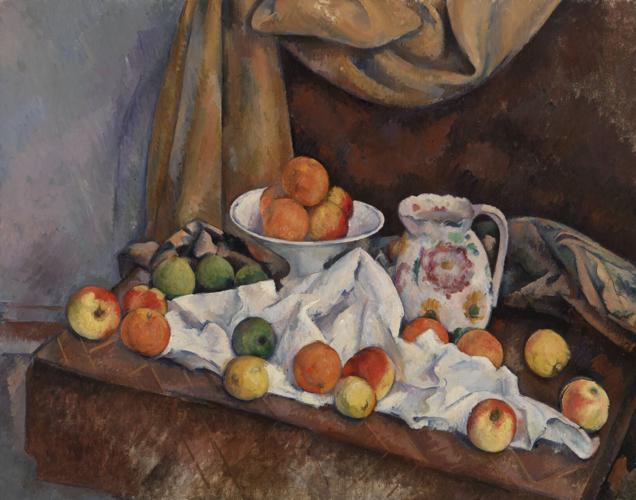
Paul Cézanne’s 1892–94 “Still Life (Nature morte)” is part of a special exhibit at the Barnes Foundation.
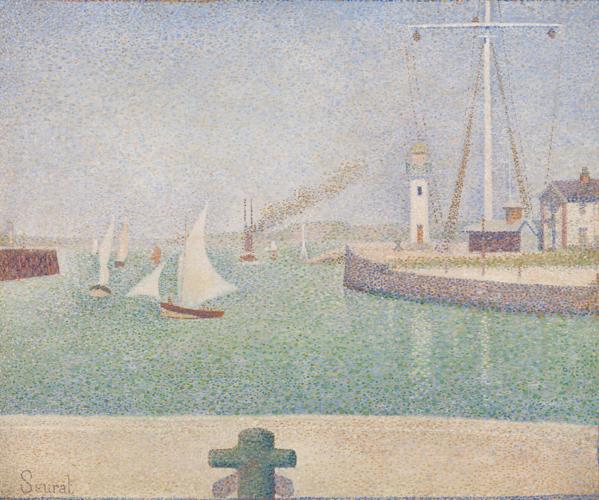
Georges Seurat’s 1886 oil painting, “Entrance of The Port of Honfleur (Entrée du port d’Honfleur),” is part of a special exhibit at the The Barnes Foundation in Philadelphia.
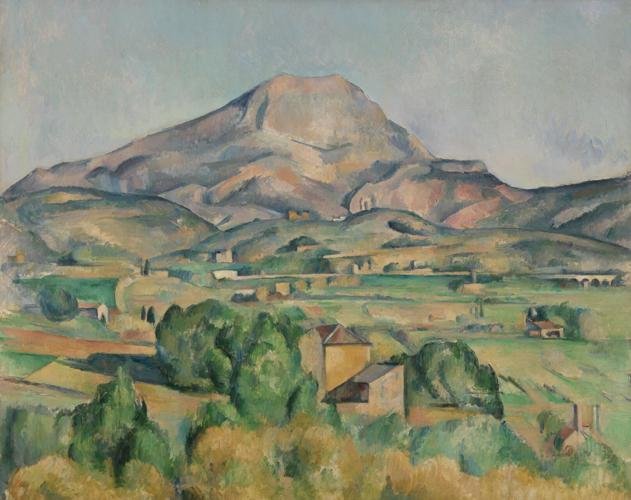
Paul Cézanne’s 1892–1895 oil painting, “Mont Sainte-Victoire (La Montagne Sainte-Victoire),” is part of a special exhibit at the The Barnes Foundation in Philadelphia.
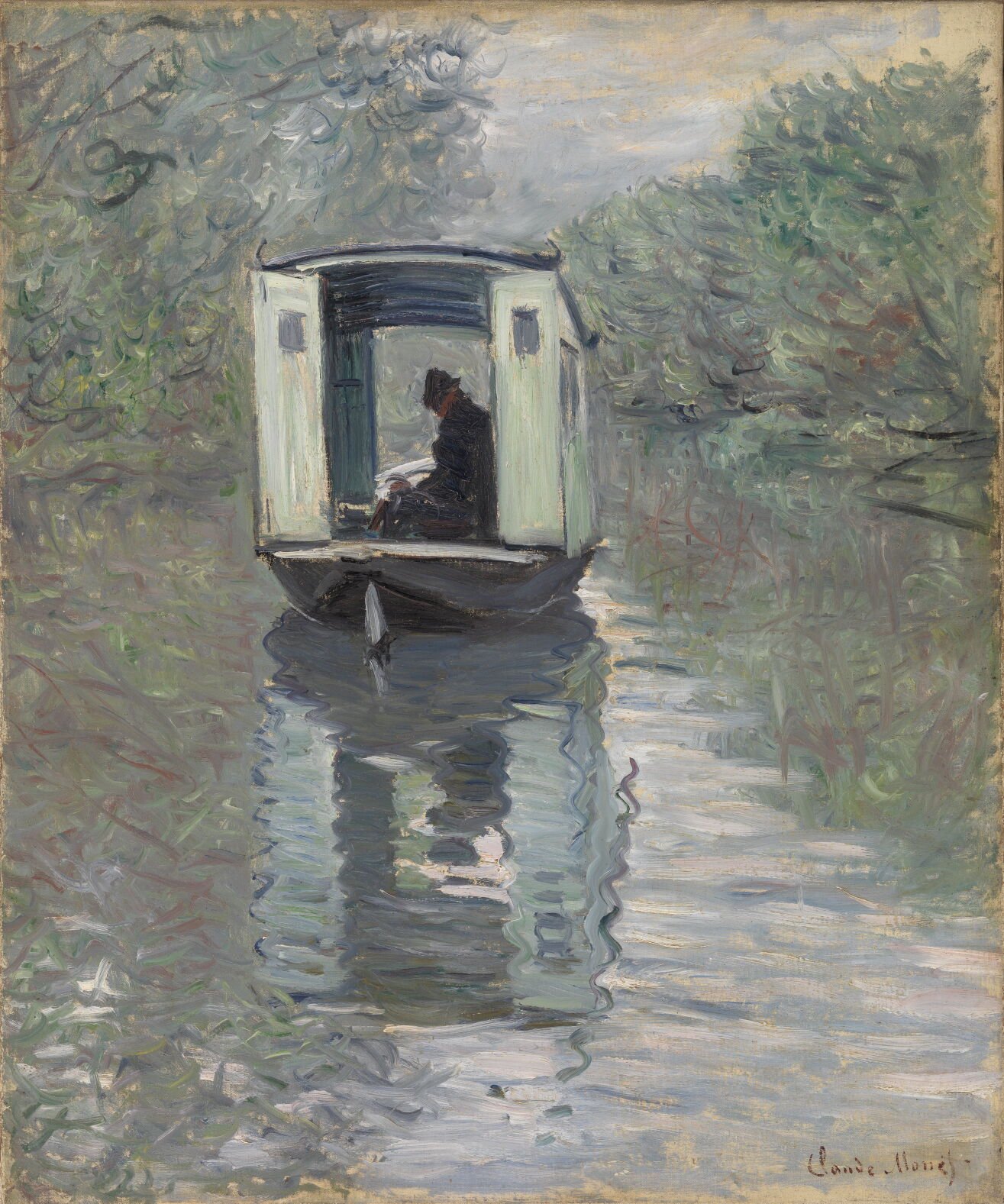
Claude Monet’s 1876 oil painting, “The Studio Boat (Le Bateau-atelier)” is part of a special exhibit at the The Barnes Foundation in Philadelphia.
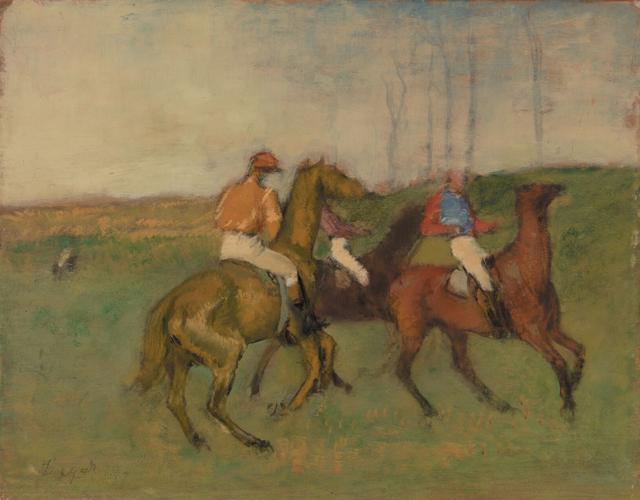
Edgar Degas’ circa 1890-95 oil painting, “Jockeys and Race Horses,” is part of a special exhibit at the The Barnes Foundation in Philadelphia.
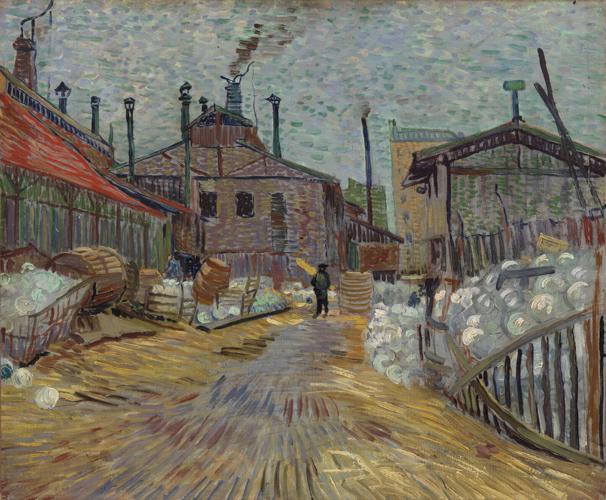
Vincent van Gogh’s 1887 oil painting, “The Factory,” is part of a special exhibit at the The Barnes Foundation in Philadelphia.
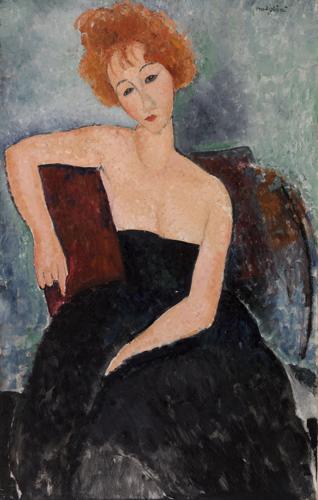
Amedeo Modigliani’s 1918 painting, “Portrait of the Red-Headed Woman (Portrait de la femme rousse),” is part of an exhibit currently at the Barnes Foundation
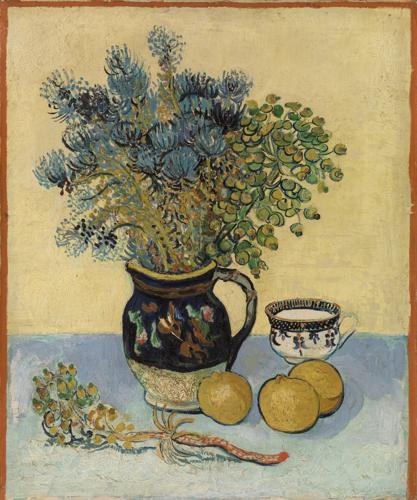
Vincent van Gogh’s 1888 oil painting, “Still Life (Nature morte),” is part of a special exhibit at the The Barnes Foundation in Philadelphia.
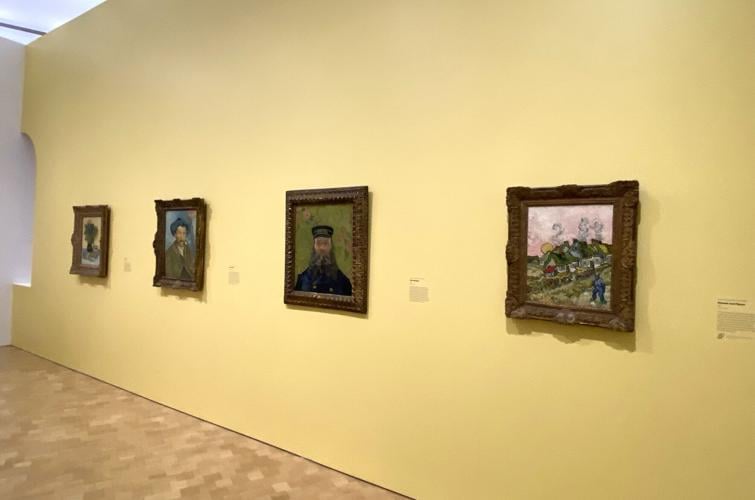
Four canvases by Vincent Van Gogh are displayed on a yellow wall as part of a special exhibit of French paintings in the Barnes Foundation.
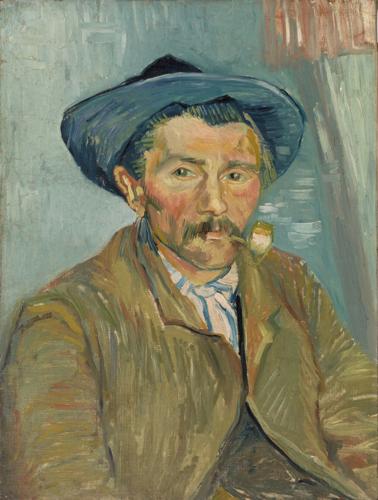
Vincent van Gogh’s 1888 oil painting, “The Smoker (Le Fumeur),” is part of a special exhibit at the The Barnes Foundation in Philadelphia.
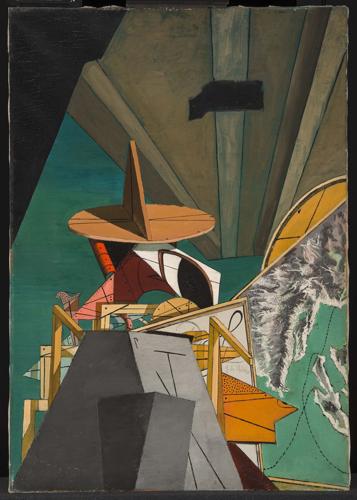
Giorgio de Chirico’s 1916 oil painting, “The Pirate (Le Corsaire),” is part of a special exhibit at the The Barnes Foundation in Philadelphia.

Paul Cézanne’s 1892–94 “Still Life (Nature morte)” is part of a special exhibit at the Barnes Foundation.

Georges Seurat’s 1886 oil painting, “Entrance of The Port of Honfleur (Entrée du port d’Honfleur),” is part of a special exhibit at the The Barnes Foundation in Philadelphia.

Paul Cézanne’s 1892–1895 oil painting, “Mont Sainte-Victoire (La Montagne Sainte-Victoire),” is part of a special exhibit at the The Barnes Foundation in Philadelphia.

Claude Monet’s 1876 oil painting, “The Studio Boat (Le Bateau-atelier)” is part of a special exhibit at the The Barnes Foundation in Philadelphia.

Edgar Degas’ circa 1890-95 oil painting, “Jockeys and Race Horses,” is part of a special exhibit at the The Barnes Foundation in Philadelphia.

Vincent van Gogh’s 1887 oil painting, “The Factory,” is part of a special exhibit at the The Barnes Foundation in Philadelphia.

Amedeo Modigliani’s 1918 painting, “Portrait of the Red-Headed Woman (Portrait de la femme rousse),” is part of an exhibit currently at the Barnes Foundation

Vincent van Gogh’s 1888 oil painting, “Still Life (Nature morte),” is part of a special exhibit at the The Barnes Foundation in Philadelphia.

Four canvases by Vincent Van Gogh are displayed on a yellow wall as part of a special exhibit of French paintings in the Barnes Foundation.

Vincent van Gogh’s 1888 oil painting, “The Smoker (Le Fumeur),” is part of a special exhibit at the The Barnes Foundation in Philadelphia.

Giorgio de Chirico’s 1916 oil painting, “The Pirate (Le Corsaire),” is part of a special exhibit at the The Barnes Foundation in Philadelphia.
And, sometimes, you get the chance to see famous paintings by popular European artists of centuries past — paintings usually accessible only at a distance — up close. I had that chance recently, at a preview of a current Barnes Foundation exhibit, “From Paris to Provence: French Painting at the Barnes,” in Philadelphia.
If you’ve been to the Barnes, you know that its priceless collection of impressionist, post-impressionist and modernist paintings are hung as super-collector Albert Barnes wanted them arranged — salon style, with groups of paintings covering giant walls, chock-a-block with works by different artists along with locks, keys, hinges and furniture.
The art on those walls is fantastic. But I sometimes get overwhelmed by its jumbled array, and by having to use a schematic to figure out which painting comes from which artist.
Amedeo Modigliani’s 1918 painting, “Portrait of the Red-Headed Woman (Portrait de la femme rousse),” is part of an exhibit currently at the Barnes Foundation
BARNES FOUNDATION
But right now, while some of the Barnes’ gallery rooms are closed for floor renovations, curator Cindy Kang has taken the opportunity to bring 55 works by the likes of Claude Monet, Pierre-Auguste Renoir, Edouard Manet and Vincent van Gogh down to eye level in this exhibit.
As she did last year with an exhibition of works by Henri Matisse and Renoir, Kang places existing Barnes Collection works in what she calls “new conversations” with each other. Arranged on colorful walls — bright yellow for the works of van Gogh, for example — the works can breathe and shine.
At a June preview, Kang said she arranged the exhibit as a journey through France, from Paris and its suburbs to the Channel Coast to Aix-en-Provence and Arles in the south. As railways developed in France, she notes, artists were able to move from region to region, searching for new light, new subjects, new vision.
Georges Seurat’s 1886 oil painting, “Entrance of The Port of Honfleur (Entrée du port d’Honfleur),” is part of a special exhibit at the The Barnes Foundation in Philadelphia.
BARNES FOUNDATION
It’s an installation, Kang says, “of iconic and beloved works” and “an unprecedented opportunity, I think, for people to see … works that you think you may know and love in a new way, and learn different things about them.”
The exhibit is heavy on works by Paul Cezanne — “Cezanne is the core and the heart of this show,” Kang says — including a section of the exhibit focusing on his decades of painting dappled woods, boxy farmhouses and ivory-bodied bathers under arches of trees at his family’s country estate, the Jas de Bouffan in Provence.
I learned during a tour of the exhibit that Cezanne had an especially deep understanding of one of his most-painted subjects — Provence’s Mont Sainte-Victoire — because of his close friendship with a geologist who helped him learn what the mountain was made of, as it were.
Four canvases by Vincent Van Gogh are displayed on a yellow wall as part of a special exhibit of French paintings in the Barnes Foundation.
MARY ELLEN WRIGHT | Staff
I went to a crowded Cezanne exhibit in Washington, D.C., years ago, so it was a blessed relief in Philly to not have to jockey for position to see one of Cezanne’s “Mont Sainte-Victoire” works up close, and be reminded how his patches of brown and green on that mountain prefigured the Cubist movement.
I love looking at pictures and paintings that contain skulls of any type; they inspire me to ponder mortality in some way. So it was great to get a peek at the green-and-pink pears sharing a table with a buff-colored human skull in Cezanne’s “Still Life with Skull” at the Barnes.
Henri Matisse is my favorite artist, so it was nice to see a work of his in this exhibit that I wasn’t familiar with: “Blue Still Life,” featuring a jumble of multicolored fruit next to a white vase on a patterned tablecloth.
Paintings inspire connections
Being able to get close to these kind of paintings always gives me a thrill: I’m reminded that those painterly brush strokes that seem to rise in 3-D from canvases like “The Postman” and “The Smoker” were made by the actual hand of THE Vincent van Gogh — a man penniless and anxiety-ridden in life, and a total artistic rock star, who has inspired songs and movies, in death.
I learned from this exhibit that, when van Gogh first arrived in Provence — where the quality of the light transformed his color palette from the browns and grays of the Netherlands and Paris to the technicolor of sunflowers and irises — it was a rainy winter month.
Vincent van Gogh’s 1888 oil painting, “Still Life (Nature morte),” is part of a special exhibit at the The Barnes Foundation in Philadelphia.
BARNES FOUNDATION
Not able to paint outdoors, van Gogh gathered some greenish-blue wildflowers into a colorful vase, added some lemons, a teacup and a bundle of herbs, and created a lovely “Still Life” painting that shines on a yellow gallery wall in this exhibit.
Having the ability to see these works up close, at my leisure, also allows my mind to wander to previous encounters I’ve had with the same artists in different places and cultural mediums.
Looking at the van Gogh canvases in the Barnes conjures images of Kirk Douglas, wearing a straw hat crowned with lighted candles as the manic artist in the 1956 film “Lust for Life.” It also reminds me of the time I cried in the National Gallery of Cardiff, Wales, in front of one of van Gogh’s last paintings, “Rain — Auvers,” filled with dark slashes of paint that seem to exemplify the mental illness he battled at the end of his life.
As I stared at the tiny dots of color making up the boats and lighthouse reflected in blue water in Georges Seurat’s “Entrance to the Port of Honfleur” in the Barnes exhibit, I was instantly reminded of how my pulse quickened the first time I got a close look at one of my favorites among my own collection of framed posters — Seurat’s “The Lighthouse at Honfleur” — more than 40 years ago in Washington’s National Gallery.
I simultaneously remembered seeing local actor Sean Young as the Seurat-like “George,” jabbing Pointillist dots into an invisible canvas on stage while singing “Color and Light” in the Stephen Sondheim musical “Sunday in the Park with George” — an unforgettable moment in 1999 at the Ephrata Performing Arts Center.
In the last room of the Barnes exhibit are 20th-century works by Amedeo Modigliani, Giorgio de Chirico, Chaim Soutine and Joan Miró — works that are a modernist departure from the soft, rosy-cheeked women of Renoir or the short, loose brush strokes of Claude Monet’s “Studio Boat,” featuring its dark figure of the artist at work in his boat on the River Seine.
Edgar Degas’ circa 1890-95 oil painting, “Jockeys and Race Horses,” is part of a special exhibit at the The Barnes Foundation in Philadelphia.
BARNES FOUNDATION
I was drawn to an arresting Soutine painting called “Flayed Rabbit,” which shows just that — the red guts of a cut-open rabbit carcass. Knowing that Soutine suffered from bleeding ulcers for many years — through his series of paintings of animal carcasses — I could almost sense his pain splayed out across the canvas. Having had a serious, painful ulcer as a child myself, boy, could I ever feel Soutine’s agony through that picture, and identify with the weird things that kind of pain makes a person think about. I’m still thinking about the work weeks later.
Seeing an artist’s work up close, at a place like the Barnes, can “bring up a lot of stuff” inside you, if you let it.
So, if you’re up for a trip to Philly, you might want to check out this special Barnes exhibit, to have a close encounter with these paintings by popular artists before they return to their normal, jumbled perches after the show closes Aug. 31.
Stand close, let the works wash over you and let your mind wander where it will.
“Unscripted” is a weekly entertainment column produced by a rotating team of writers.
IF YOU GO
• What: “From Paris to Provence: French Painting at the Barnes.”
• When: 11 a.m. to 5 p.m. Thursdays through Mondays, now through Aug. 31.
• Where: The Roberts Gallery of the Barnes Foundation museum, 2025 Benjamin Franklin Parkway, Philadelphia.
• Digital bonus: Use your phone to scan the QR code on the wall at the entrance to the exhibit, and you can use the resulting app to learn more about some of the works through the eyes — and words — of Barnes staff and volunteers.
• Cost: The exhibit is included in the general admission. Free for ages 12 and under; $5 for ages 13-18; $30 for adults and $28 for ages 65 and over.
• Information and tickets: visit.barnesfoundation.org.
Success! An email has been sent to with a link to confirm list signup.
Error! There was an error processing your request.
![French exhibit at Philadelphia museum refreshes vision, inspires connections [Unscripted column] | Entertainment](https://www.europesays.com/us/wp-content/uploads/2025/07/687addec5270a.image_.jpg)